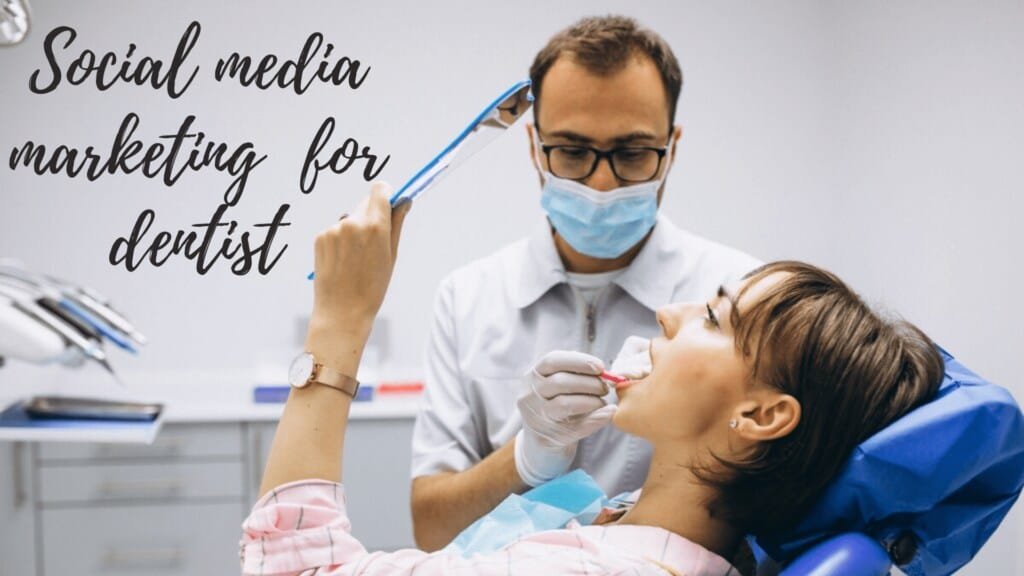- 1. Why Is SEO Considered the Highest Quality Lead Source?
- 2. What Is Google’s Market Share in the Search Engine Market?
- 3. How Much Traffic Is Driven by Organic Search?
- 4. Why Is the First Page of Search Results So Important?
- 5. How Prevalent Are Voice Searches?
- 6. What Is the Click-Through Rate for the First Position in Google?
- 7. Why Do Marketers Prioritize Improving SEO?
- 8. How Effective Is SEO According to Marketers?
- 9. How Can Updating Old Blog Posts Impact Traffic?
- 10. What Is the Ideal Content Length for Top Position Google Articles?
- 11. How Many Factors Does Google’s Algorithm Use to Rank Websites?
- 12. How Common Are Long-Tail Keywords in Search Queries?
- 13. What Is the Click-Through Rate for the Top Result in Google?
- 14. How Does Page Load Speed Affect Bounce Rate?
- 15. Why Is Mobile-Friendly Design Important for Local Searches?
- 16. How Do Marketers Compare SEO and PPC?
- 17. What Is the Close Rate for SEO Leads Compared to Outbound Leads?
- 18. How Does Organic Search Revenue Compare for B2B Companies?
- 19. How Do Local Searches Influence In-Store Visits?
- 20. What Percentage of Google Searches Seek Local Information?
- 21. What Is the Expected Global Digital Ad Spend in 2024?
- 22. How Can Search Ads Impact Brand Awareness?
- 23. What Is the Average Cost-Per-Click for Google Ads?
- 24. How Do Businesses Benefit Financially from Google Ads?
- 25. How Often Do People Click on Google Ads When Looking to Buy Online?
- 26. How Do Paid Search Results Perform for High Commercial Intent Keywords?
- 27. How Effective Is Video Content in Driving Organic Search Results?
- 28. What Is the Impact of Google’s Mobile-First Indexing?
- 29. How Does Page Speed Influence User Experience and SEO?
- 30. Why Is Structured Data Important for Voice Search?
- We got all the latest Marketing Stats here:
In the ever-evolving world of digital marketing, staying updated with the latest trends and statistics is crucial for success. Search Engine Marketing (SEM) has become a fundamental component for businesses aiming to enhance their online presence and drive traffic. In this comprehensive guide, we delve into the most significant SEM statistics for 2024, providing you with insights to refine your strategies and stay ahead of the competition.
1. Why Is SEO Considered the Highest Quality Lead Source?

Over 60% of marketers believe SEO is their highest quality lead source. This statistic underscores the importance of SEO in generating high-quality leads. Unlike other marketing channels, SEO targets users actively searching for specific information, products, or services. This intent-driven approach ensures that leads generated through SEO are more likely to convert into customers.
Moreover, SEO offers long-term benefits. While paid advertising can provide quick results, its impact is temporary. In contrast, a well-optimized website can continue to attract organic traffic and generate leads over time, providing sustained value.
2. What Is Google’s Market Share in the Search Engine Market?
Google holds a 92.47% market share in the global search engine market. This dominance makes it imperative for businesses to prioritize Google in their search engine marketing strategies. Given Google’s extensive reach, optimizing your website for Google can significantly enhance your visibility and drive more traffic to your site.
Additionally, understanding Google’s algorithms and updates is crucial. By staying informed about the latest changes, you can adjust your SEO strategies accordingly, ensuring that your website remains competitive.
3. How Much Traffic Is Driven by Organic Search?
Organic search drives 53% of website traffic. This statistic highlights the significance of organic search in the digital marketing landscape. Unlike paid traffic, which incurs a cost for each click, organic traffic is free and can provide a steady stream of visitors over time.
To capitalize on organic search, focus on creating high-quality content that aligns with user intent. Conduct keyword research to identify relevant terms and phrases that your target audience is searching for. By optimizing your content for these keywords, you can improve your rankings and attract more organic traffic.
4. Why Is the First Page of Search Results So Important?
75% of users never scroll past the first page of search results. This behavior emphasizes the importance of ranking on the first page of search engines. If your website is not visible on the first page, you are likely missing out on a significant amount of traffic.
Achieving a first-page ranking requires a combination of on-page and off-page SEO strategies. On-page SEO involves optimizing your website’s content, meta tags, and internal links, while off-page SEO focuses on building high-quality backlinks from other reputable websites. Both are essential for improving your search engine rankings and increasing your visibility.
5. How Prevalent Are Voice Searches?
Voice searches account for 20% of all mobile queries. As voice-activated devices like smart speakers become more common, optimizing for voice search is becoming increasingly important. Voice searches tend to be more conversational and question-based, so incorporating natural language and long-tail keywords into your content can help you capture this growing segment of search traffic.
Additionally, consider creating content that answers common questions your audience might ask. This can improve your chances of appearing in voice search results, particularly for featured snippets, which are often read aloud by voice assistants.
6. What Is the Click-Through Rate for the First Position in Google?
The average click-through rate for the first position in Google is 28.5%. Securing the top spot in search results can significantly increase your website’s traffic. Users tend to trust and click on the first result more than lower-ranked links, making it a highly coveted position.
To achieve this, focus on optimizing your content for relevant keywords, improving your website’s user experience, and building high-quality backlinks. These efforts can help you climb the rankings and capture more clicks from search engine users.
7. Why Do Marketers Prioritize Improving SEO?
61% of marketers say improving SEO and growing their organic presence is their top inbound marketing priority. This priority is driven by the recognition that SEO can deliver long-term, sustainable results. Unlike paid advertising, which requires ongoing investment, SEO can continue to generate traffic and leads over time without additional costs.
Improving SEO involves a range of activities, including keyword research, content creation, technical optimization, and link building. By investing in these areas, marketers can enhance their website’s visibility, attract more visitors, and ultimately drive more conversions.
8. How Effective Is SEO According to Marketers?
82% of marketers report the effectiveness of SEO is on the rise. This increasing effectiveness highlights the growing importance of SEO in digital marketing strategies. As search engines continue to evolve, SEO techniques have become more sophisticated, allowing marketers to achieve better results.
To maximize the effectiveness of your SEO efforts, stay updated with the latest trends and best practices. Regularly audit your website to identify areas for improvement and adjust your strategies based on the latest algorithm updates and industry developments.
9. How Can Updating Old Blog Posts Impact Traffic?
Updating and republishing old blog posts with new content and images can increase organic traffic by as much as 106%. This strategy leverages existing content to attract new visitors and improve search engine rankings. By refreshing outdated information, adding new insights, and optimizing for current keywords, you can enhance the relevance and appeal of your content.
This approach not only improves your SEO but also provides value to your audience by offering up-to-date information. Regularly reviewing and updating your content can help you maintain a competitive edge and keep your website relevant in the eyes of search engines and users.
10. What Is the Ideal Content Length for Top Position Google Articles?

The average content length of the top position Google article contains 1,890 words. This statistic indicates that longer, more comprehensive content tends to perform better in search engine rankings. Detailed articles provide more value to readers by covering topics in depth, which can lead to higher engagement and more backlinks.
When creating content, aim to cover your topic thoroughly. Include relevant subtopics, answer common questions, and provide actionable insights. This approach can help you achieve higher rankings and attract more organic traffic.
11. How Many Factors Does Google’s Algorithm Use to Rank Websites?
Google’s algorithm uses over 200 factors to rank websites. Understanding these factors can help you optimize your website more effectively. Key ranking factors include content quality, keyword usage, backlinks, mobile-friendliness, page speed, and user experience.
While it’s not necessary to optimize for all 200 factors, focusing on the most important ones can significantly improve your search engine rankings. Regularly update your SEO knowledge to stay informed about changes in Google’s algorithm and adjust your strategies accordingly.
12. How Common Are Long-Tail Keywords in Search Queries?
50% of search queries contain four or more words. Long-tail keywords are more specific and less competitive than short, broad keywords. They often reflect a user’s intent more accurately, leading to higher conversion rates.
Incorporate long-tail keywords into your content to capture this segment of search traffic. Use tools like Google’s Keyword Planner or other keyword research tools to identify relevant long-tail keywords for your industry. By optimizing your content for these terms, you can attract highly targeted traffic and improve your chances of ranking for niche queries.
13. What Is the Click-Through Rate for the Top Result in Google?
The number one result in Google gets 31.7% of all clicks. Securing this top spot can dramatically increase your website’s visibility and traffic. Users tend to trust and click on the first result more than lower-ranked links, making it a highly desirable position.
To achieve this, focus on creating high-quality, relevant content that meets the needs of your audience. Optimize your website’s on-page elements, such as meta tags, headings, and internal links. Building high-quality backlinks from reputable websites can also improve your rankings and increase your chances of securing the top position.
14. How Does Page Load Speed Affect Bounce Rate?
Pages that load within 2 seconds have an average bounce rate of 9%. Page load speed is a critical factor in user experience and search engine rankings. Slow-loading pages can lead to higher bounce rates, as users are likely to abandon a website if it takes too long to load.
To improve your page load speed, optimize your images, minimize HTTP requests, and use a content delivery network (CDN). Regularly monitor your website’s performance and make necessary adjustments to ensure fast loading times. A faster website can enhance user satisfaction and improve your search engine rankings.
15. Why Is Mobile-Friendly Design Important for Local Searches?
61% of mobile searchers are more likely to contact a local business if they have a mobile-friendly site. With the increasing use of mobile devices for online searches, having a mobile-friendly website is essential. A responsive design ensures that your website looks and functions well on all devices, providing a better user experience.
Optimizing your website for mobile can also improve your search engine rankings, as Google prioritizes mobile-friendly sites in its search results. Ensure your site is easy to navigate, loads quickly, and provides a seamless experience for mobile users to capture more local search traffic.

16. How Do Marketers Compare SEO and PPC?
70% of marketers see SEO as more effective than PPC. While both SEO and PPC are valuable components of a digital marketing strategy, SEO offers long-term benefits that PPC cannot match. Once your website ranks highly in search results, it can continue to attract organic traffic without ongoing costs.
PPC, on the other hand, requires continuous investment to maintain visibility. While it can provide immediate results, its impact is temporary. By investing in SEO, you can build a sustainable source of traffic and leads that grows over time.
17. What Is the Close Rate for SEO Leads Compared to Outbound Leads?
SEO leads have a 14.6% close rate, compared to 1.7% for outbound leads. This significant difference highlights the effectiveness of SEO in generating high-quality leads. Users who find your website through organic search are often actively looking for the products or services you offer, making them more likely to convert.
In contrast, outbound leads, such as cold calls or emails, typically have lower conversion rates because they target a broader audience that may not be interested in your offerings. By focusing on SEO, you can attract more qualified leads and improve your overall conversion rates.
18. How Does Organic Search Revenue Compare for B2B Companies?
B2B companies generate 2x more revenue from organic search than any other channel. This statistic underscores the importance of SEO for B2B businesses. Organic search can drive highly targeted traffic to your website, leading to increased revenue and growth.
To maximize the benefits of organic search, create high-quality content that addresses the needs and pain points of your target audience. Focus on building authority in your industry through thought leadership and informative content. By doing so, you can attract more organic traffic and generate more revenue for your business.
19. How Do Local Searches Influence In-Store Visits?
Local searches lead 50% of mobile users to visit stores within one day. This statistic highlights the importance of local SEO for brick-and-mortar businesses. Optimizing your website for local search can drive more foot traffic to your physical locations.
Ensure your business information is accurate and up-to-date on Google My Business and other online directories. Encourage customers to leave reviews and respond to them promptly. By optimizing for local search, you can attract more local customers and increase your in-store visits.
20. What Percentage of Google Searches Seek Local Information?

46% of all Google searches are seeking local information. This significant portion of search queries emphasizes the importance of local SEO. Users often turn to search engines to find local businesses, products, or services, making it crucial for businesses to optimize their online presence for local search.
To capture this traffic, focus on local keyword optimization, create location-specific content, and ensure your business listings are accurate and complete. By doing so, you can improve your visibility in local search results and attract more local customers.
21. What Is the Expected Global Digital Ad Spend in 2024?
By 2024, global digital ad spend is expected to reach $526 billion, with a significant portion allocated to search ads. This growth reflects the increasing importance of digital marketing in today’s business landscape. Search ads, in particular, are a key component of digital ad spend due to their ability to target users based on intent.
As businesses allocate more budget to digital advertising, it’s crucial to develop effective SEM strategies that maximize ROI. This involves optimizing ad campaigns, conducting keyword research, and continuously monitoring performance to ensure that your ads reach the right audience.
22. How Can Search Ads Impact Brand Awareness?
Search ads can increase brand awareness by 80%. This statistic highlights the effectiveness of search ads in building brand recognition. When users see your ads in search results, it can increase familiarity with your brand, even if they don’t click on the ad immediately.
To maximize brand awareness through search ads, focus on creating compelling ad copy that resonates with your target audience. Use relevant keywords and ensure your ads are visually appealing. Additionally, consider using remarketing campaigns to keep your brand top-of-mind for users who have previously interacted with your website.
23. What Is the Average Cost-Per-Click for Google Ads?
The average cost-per-click (CPC) for Google Ads is between $1 and $2 on the search network. CPC can vary widely depending on the industry, competition, and keyword selection. Understanding your CPC is essential for managing your advertising budget and calculating ROI.
To optimize your ad spend, conduct thorough keyword research to identify cost-effective keywords that are relevant to your business. Use negative keywords to exclude irrelevant traffic and continuously monitor your campaigns to make adjustments that improve performance and reduce costs.
24. How Do Businesses Benefit Financially from Google Ads?
Businesses make an average of $2 in revenue for every $1 they spend on Google Ads. This statistic underscores the potential profitability of Google Ads when managed effectively. By targeting the right keywords and optimizing ad campaigns, businesses can achieve a positive return on investment.
To maximize your ROI, focus on creating high-quality ads that are relevant to your audience. Use ad extensions to provide additional information and improve click-through rates. Regularly analyze your campaign performance and make data-driven decisions to enhance your results.
25. How Often Do People Click on Google Ads When Looking to Buy Online?
65% of people click on Google ads when they are looking to buy an item online. This behavior highlights the effectiveness of search ads in driving purchase decisions. Users often turn to search engines when they are ready to make a purchase, making search ads a powerful tool for capturing high-intent traffic.
To leverage this opportunity, create ads that clearly convey the benefits of your products or services. Use strong calls-to-action and highlight any special offers or promotions. By targeting users at the right stage of their buying journey, you can increase conversions and drive sales.
26. How Do Paid Search Results Perform for High Commercial Intent Keywords?

Paid search results receive 65% of clicks for keywords with high commercial intent. This statistic indicates that users searching for products or services with the intent to buy are more likely to click on paid ads. High commercial intent keywords typically include terms like “buy,” “discount,” or specific product names.
To capture this traffic, bid on high commercial intent keywords and create ads that align with the user’s search intent. Ensure your landing pages are optimized for conversions, with clear calls-to-action and easy navigation. By focusing on high-intent keywords, you can drive more qualified traffic and increase your chances of converting visitors into customers.
27. How Effective Is Video Content in Driving Organic Search Results?
Video content is 50 times more likely to drive organic search results than plain text. This statistic highlights the growing importance of video in SEO strategies. Videos can engage users more effectively than text and are more likely to be shared, increasing their reach and impact.
To optimize your video content for search engines, include relevant keywords in the title, description, and tags. Create high-quality, informative videos that provide value to your audience. Additionally, consider embedding videos on your website to enhance user engagement and improve your site’s SEO performance.
28. What Is the Impact of Google’s Mobile-First Indexing?
With Google’s mobile-first indexing, having a mobile-friendly website is more important than ever. This change means that Google predominantly uses the mobile version of the content for indexing and ranking. Ensuring your website is mobile-optimized can improve your search engine rankings and enhance the user experience for mobile visitors.
Focus on responsive design, fast loading times, and easy navigation on mobile devices. Regularly test your website’s mobile performance and make necessary adjustments to ensure it meets Google’s mobile-first criteria. A mobile-friendly website can improve your visibility in search results and attract more traffic from mobile users.
29. How Does Page Speed Influence User Experience and SEO?
Page speed is a critical factor that influences both user experience and SEO. Fast-loading pages can reduce bounce rates and improve user engagement, while slow-loading pages can lead to higher abandonment rates. Google also considers page speed as a ranking factor, making it essential for SEO.
To improve page speed, optimize your images, leverage browser caching, and minimize server response times. Use tools like Google PageSpeed Insights to identify areas for improvement and implement changes to enhance your site’s performance. A faster website can lead to better user satisfaction and higher search engine rankings.
30. Why Is Structured Data Important for Voice Search?
Structured data helps search engines understand the content of your website better and can improve your chances of appearing in voice search results. Voice search queries are often more conversational and specific, making it important to provide clear and structured information that search engines can easily interpret.
Implement schema markup on your website to provide search engines with detailed information about your content. This can enhance your visibility in voice search results and improve the accuracy of the information presented by voice assistants. By optimizing for voice search, you can capture a growing segment of search traffic and improve your overall SEO performance.
We got all the latest Marketing Stats here:
Read Next:
- Segmentation in Email Marketing: Targeting the Right Audience with the Right Message
- The Power of A/B Testing in Email Marketing: Making Data-Driven Decisions
- Email Marketing for E-commerce: Strategies to Drive Sales and Retention
- The Role of User Surveys in Enhancing Email Marketing Strategies
- 31+ Top Social Media Management tools Compared! (2023)





















Comments are closed.